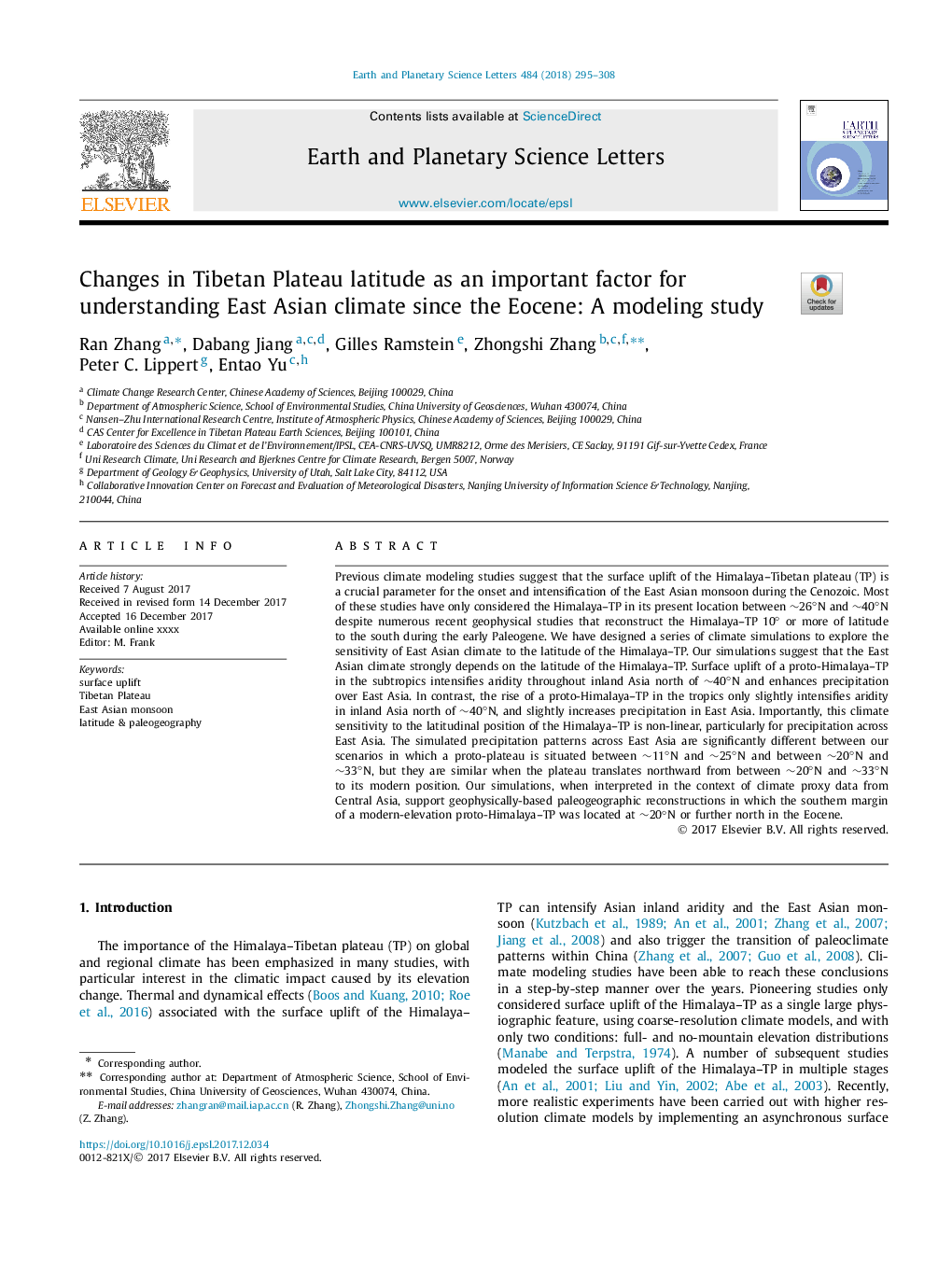| Article ID | Journal | Published Year | Pages | File Type |
|---|---|---|---|---|
| 8907169 | Earth and Planetary Science Letters | 2018 | 14 Pages |
Abstract
Previous climate modeling studies suggest that the surface uplift of the Himalaya-Tibetan plateau (TP) is a crucial parameter for the onset and intensification of the East Asian monsoon during the Cenozoic. Most of these studies have only considered the Himalaya-TP in its present location between â¼26°N and â¼40°N despite numerous recent geophysical studies that reconstruct the Himalaya-TP 10° or more of latitude to the south during the early Paleogene. We have designed a series of climate simulations to explore the sensitivity of East Asian climate to the latitude of the Himalaya-TP. Our simulations suggest that the East Asian climate strongly depends on the latitude of the Himalaya-TP. Surface uplift of a proto-Himalaya-TP in the subtropics intensifies aridity throughout inland Asia north of â¼40°N and enhances precipitation over East Asia. In contrast, the rise of a proto-Himalaya-TP in the tropics only slightly intensifies aridity in inland Asia north of â¼40°N, and slightly increases precipitation in East Asia. Importantly, this climate sensitivity to the latitudinal position of the Himalaya-TP is non-linear, particularly for precipitation across East Asia. The simulated precipitation patterns across East Asia are significantly different between our scenarios in which a proto-plateau is situated between â¼11°N and â¼25°N and between â¼20°N and â¼33°N, but they are similar when the plateau translates northward from between â¼20°N and â¼33°N to its modern position. Our simulations, when interpreted in the context of climate proxy data from Central Asia, support geophysically-based paleogeographic reconstructions in which the southern margin of a modern-elevation proto-Himalaya-TP was located at â¼20°N or further north in the Eocene.
Related Topics
Physical Sciences and Engineering
Earth and Planetary Sciences
Earth and Planetary Sciences (General)
Authors
Ran Zhang, Dabang Jiang, Gilles Ramstein, Zhongshi Zhang, Peter C. Lippert, Entao Yu,
